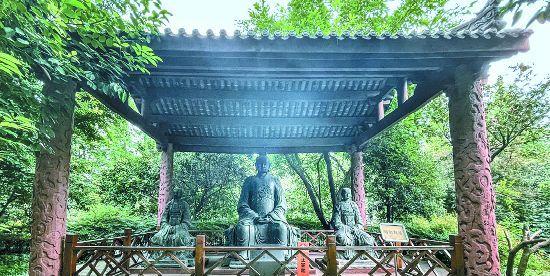
Bronze statue of Jiang Blasphemy
The reporter learned from the Municipal Water Affairs Bureau yesterday that the Municipal Water Affairs Bureau has carried out the census of Chengdu's water cultural heritage resources and related work since June this year, and the geophysical exploration team of the Sichuan Provincial Bureau of Geology and Mineral Resources has formed a professional team as a technical support, and has completed the census of 14,335 square kilometers in 23 districts (cities) and counties in the city.
The census of water cultural heritage resources is divided into 2 main categories, 7 sub-categories and 21 basic types, and up to now, a total of 1507 water cultural heritage resources have been identified, including 1165 tangible water cultural heritage resources and 342 intangible water cultural heritage resources. According to the analysis of the census results and characteristics of each district (city) and county sub-region, the characteristics of resources in various places are obvious, and the distribution of time and space shows the distribution characteristics of more west and less east.
According to the person in charge of the census team, the census work has yielded fruitful results, and many meaningful resources have been discovered during the period. For example, the ruins of the "first of the four deities" Jiangdu Temple, the Revetment Site of Hongqiao Village, which is the earliest prehistoric water conservancy site with the Liangzhu Water Conservancy Site in Hangzhou, the Guanzishan (Yuhongqiao) Hydropower Station, one of the earliest four hydropower stations in China, the yamen of the three counties of the only water affairs in the country, and the conch ancient bridge group of the Eastern New Area full of local stories, each of which reflects Chengdu's profound water control tradition and tells the story of water culture belonging to Chengdu.
Focusing on the characteristics of resources, we focused on the in-depth study of 20 characteristic resources with utilization potential, such as Jiangdu Temple, Huanhua River, wenmaiyan, etc., and put forward specific utilization suggestions according to local conditions. At the same time, the water culture section of the smart water platform is established to intelligently display massive water cultural heritage resource data.
At present, Chengdu is declaring to the province the local standard of "Classification, Investigation and Evaluation of Chengdu Water Cultural Heritage Resources". (Photo courtesy of reporter Bai Yang and Li Feifei)